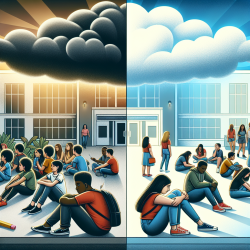Introduction
In recent years, the misuse of prescription opioids and other substances among high school students has become a growing concern. The 2019 Youth Risk Behavior Survey (YRBS) conducted by the Centers for Disease Control and Prevention (CDC) provides valuable insights into the prevalence and patterns of substance use among U.S. high school students. This blog aims to help practitioners improve their skills by implementing the outcomes of this research or encouraging further exploration.
Key Findings from the YRBS
The YRBS revealed that in 2019, 29.2% of high school students reported current alcohol use, 21.7% reported current marijuana use, and 7.2% reported current prescription opioid misuse. The study also highlighted demographic differences in substance use patterns, with notable variations by sex, race/ethnicity, grade, and sexual minority status.
Implications for Practitioners
Practitioners working with adolescents can leverage these findings to tailor their interventions and prevention strategies. Here are some actionable steps:
- Implement Evidence-Based Prevention Programs: Programs that target risk and protective factors at individual, family, and community levels are crucial. School-based programs focusing on skill-building and social-emotional learning have shown promise.
- Address Co-Occurring Substance Use: The high rates of co-occurring substance use among students misusing prescription opioids underscore the need for comprehensive prevention efforts that address multiple substances.
- Focus on Vulnerable Populations: Tailored interventions for sexual minority youths and other disproportionately affected groups can help address disparities in substance use patterns.
Encouraging Further Research
While the YRBS provides a wealth of data, there is still much to learn about the underlying causes and effective prevention strategies for youth substance use. Practitioners are encouraged to engage in further research to explore:
- The impact of community-level interventions on youth substance use.
- The role of mental health support in preventing substance misuse.
- Longitudinal studies to track changes in substance use patterns over time.
Conclusion
The findings from the 2019 YRBS highlight the ongoing challenges of youth substance use and the importance of targeted prevention efforts. By implementing evidence-based programs and conducting further research, practitioners can play a vital role in reducing substance use among high school students.
To read the original research paper, please follow this link: Prescription Opioid Misuse and Use of Alcohol and Other Substances Among High School Students — Youth Risk Behavior Survey, United States, 2019.










